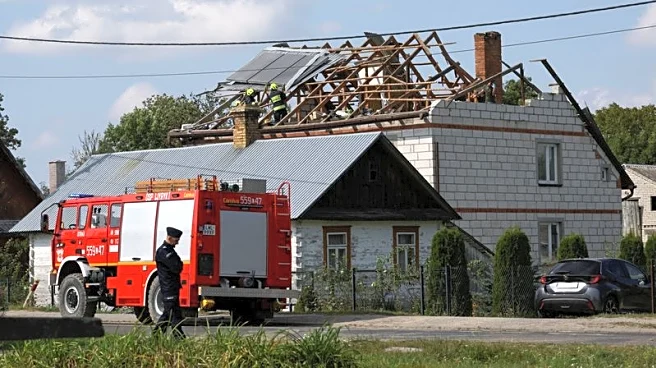What is the story about?
What's Happening?
The environmental impact of unexploded bombs is being exacerbated by climate change, leading to further land degradation. Rising temperatures and extreme weather events are reducing soil fertility and causing desertification, which compounds the effects of unexploded ordnance. In Ukraine, the presence of landmines has significantly decreased agricultural activity, with wheat production falling by 41% between 2021 and 2024. The contamination of land with explosive remnants of war poses a lasting threat to both human life and the environment, as these remnants can leak heavy metals and toxic waste into the soil.
Why It's Important?
The intersection of unexploded ordnance and climate change presents a complex challenge for environmental restoration and safety. The presence of explosive remnants can hinder responses to climate events, such as wildfires, as seen in Ukraine in 2020. The contamination of soil and water by these remnants poses significant risks to ecosystems and human health. Addressing these issues requires integrated measures that consider both the environmental and safety aspects of land restoration and conflict management.
Beyond the Headlines
The long-term implications of this issue include potential shifts in agricultural practices and land use, as well as increased health risks from soil and water contamination. The need for comprehensive strategies that address both climate change and the legacy of armed conflict is becoming increasingly urgent.
AI Generated Content
Do you find this article useful?














